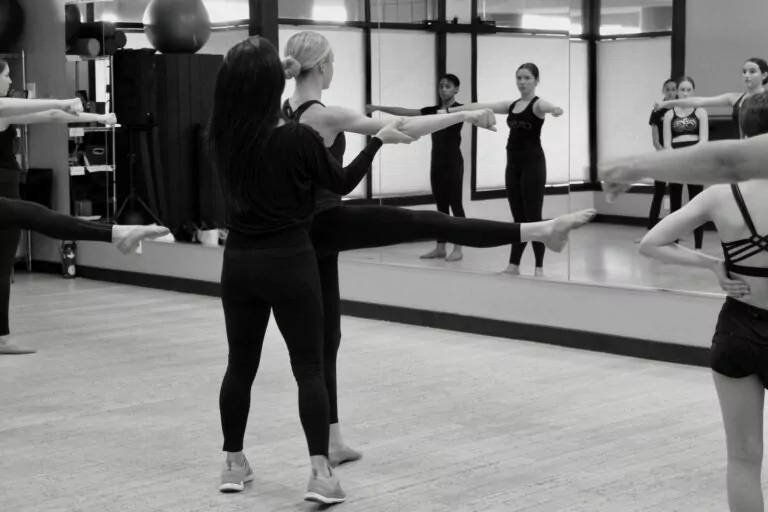In the competitive world of dance teams, where technical skill is the heartbeat of every mesmerizing performance, incorporating ballet basics into daily practice emerges as a non-negotiable necessity. Far beyond a nod to tradition, these fundamental elements serve as the backbone for elevating dance team performances to extraordinary levels of precision and technique. Let’s dig into why, for dance teams seeking to enhance their technique, the integration of ballet basics into daily drills is not just advisable but imperative for achieving unparalleled success.
1. Fundamentals as Building Blocks:
Ballet, often considered the foundation of dance, provides a comprehensive set of fundamentals that form the bedrock of any dance discipline. From posture and alignment to graceful transitions, these basics serve as the essential building blocks for intricate choreography. Just as a strong foundation supports a towering structure, mastering ballet fundamentals lays the groundwork for breathtaking performances.
2. Precision and Technique:
Ballet places a strong emphasis on precision and technique, qualities that are indispensable for a successful dance team. Incorporating ballet basics into team drills refines movements, ensuring every extension, leap, and turn is executed with advanced technique and precision. The discipline instilled by ballet enhances the team’s overall technique, contributing to a polished and professional presentation.
3. Confidence through Mastery:
Confidence is a dancer’s secret weapon, and mastery of ballet basics breeds unparalleled self-assurance. As team members become proficient in foundational movements, their confidence soars. This newfound confidence extends beyond the ballet basics, permeating every aspect of their dance repertoire. The assurance gained through practicing the basics empowers dancers to tackle complex routines with power and confidence. “In order to be the best at anything you have to have an unwavering appreciation and relentless repetition of training the basics” as stated by Alen Jr. Stein who coached the worlds greatest basketball teams, players, and CEOs in the country.
4. Warm-Up for Success:
Incorporating ballet basics into warm-up routines is a strategic approach to achieving ultimate success. Ballet warm-ups not only prepare the body for the demands of practice but also engage the mind in focused concentration. The deliberate and controlled nature of ballet movements during warm-up sets the tone for a practice session that values precision, discipline, and continuous improvement.
5. Versatility in Choreography:
Ballet basics provide dancers with a versatile skill set that enhances the team’s choreographic range. Whether transitioning between different dance styles or infusing classical elements into routines, the versatility gained through ballet fundamentals enriches the team’s repertoire. It allows for a seamless fusion of styles, creating performances that captivate audiences with their diversity and artistry.
Conclusion:
In the pursuit of dance team excellence, the incorporation of ballet basics is not a step backward; rather, it’s a leap towards mastery. As dance teams embrace the routine and consistency of fundamentals, they discover the transformative result of precision, technique, and confidence. The fundamentals of ballet serves not only as a confidence builder but as a strategic investmentin the team’s success. Through ballet basics, dance teams unlock the full spectrum of their potential, resulting in routines that are unstoppable.

